Day 16 - Why should we lift heavy things?
How about so you can be stronger and more resilient?
Or develop greater bone density?
Improve your insulin sensitivity?
Or maybe you just like the way that it makes you feel?
And if none of those really call out to you, how about living longer?
That was the conclusion from a paper published in June 2014 in the American Journal of Medicine. The title of the paper was “Muscle Mass Index as a Predictor of Longevity in Older Adults.”
Let’s go back to Paleo us.
We either stayed in shape or we died or got left behind. I know it sounds harsh but that was the reality.
We didn’t have to worry about going to the gym, everyday life had enough weight-bearing activity to keep us in shape.
For most of us, our day-to-day life doesn’t require a tremendous amount of exertion. So, if we’re going to stay in shape, we’ve got to build weight-bearing activity into our schedules.
The approaches that I’m suggesting are not for someone who wants to be on the cover of Muscle and Fitness Magazine. Nothing wrong with having that as a goal, but my approach to fitness is not geared for that result. My goal is to help you get and stay healthy with a modest amount of time invested.
There are multiple ways to approach this, depending on your starting point and your motivation.
Here are three options:
There’s something called the Primal Essential Movements.
It’s pushups, pullups (or chin-ups), squats, and planks. I’ve included a sheet that shows each movement with adaptations to make them easier or harder depending on your starting point.
And for some additional variety, there’s the 7-minute workout.
It can be found on the smartphone app called 7MWC and it’s great. 7 minutes from beginning to end. It’s a series of body weight exercises with 30 seconds of exercise and 10 seconds of rest.
Jumping jacks, wall sits, pushups, ab crunches, chair triceps dips, high knees running in place, squats, chair step ups, lunges, pushups with rotation, and planks.
It’s a great workout and all within 7 minutes!
A more intense and involved form of exercise can be found in Dr. Doug McGuff and John Little’s book, Body by Science.
Here’s a write-up I’ve done on this approach.
Their approach is not for everyone, but it will truly help your body liberate fat to be burned and increase strength and stamina.
They use a protocol that does an orderly recruitment of slow, intermediate and fast twitch muscle fibers and you perform a series of exercises that take those muscles to failure.
Now that doesn’t mean that you drop a barbell on your head.
They recommend using Nautilus, MedX, Hammer Strength or Southern Xercise Inc machines if those are available.
But the goal of taking the muscles to failure is to completely deplete the glycogen that’s stored in those muscles. This helps with the production of hormone-sensitive lipase and with improved insulin sensitivity. Again—you’ll burn body fat and increase strength and stamina.
Just be warned that the authors go into a fair amount of detail about “glycogenolysis” and the “Krebs cycle” and if that floats your boat, great.
I was glad that they had the science to back up their recommendation, but the part that really interested me was that you can get in good shape with a modest amount of time in the gym.
They’re talking as little as 12 minutes 1 day a week. I think that’s a little optimistic, but most of my sessions are only about 20-30 minutes and that includes some additional ab exercises that I do and some post-workout stretches.
Their basic workout is 5 exercises:
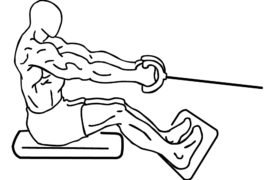
Seated Row
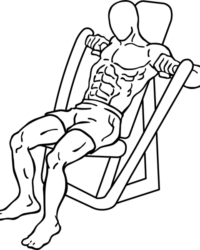
Chest Press
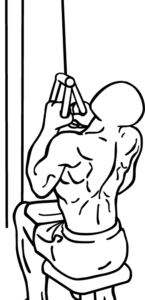
Pulldown
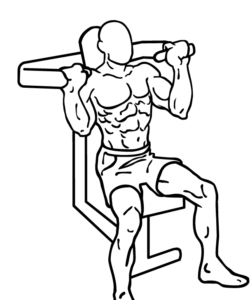
Shoulder Press
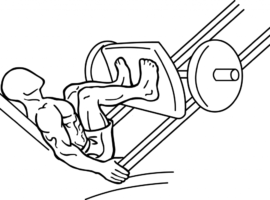
Leg Press
You’re going to select a weight that allows you to perform the exercise anywhere from 45-90 seconds with an upper end of 2 minutes.
The reasoning behind this is to make sure that all of the muscle fiber types are recruited in a sequential fashion and fatigued.
You perform the exercise as slowly as possible as long as you’re not stuttering the weight.
This could be a count of 10 to raise the weight and a count of 10 to lower it. The slow movement means that it’s all muscle and that you’re not using momentum to help move the weight.
You’ll want to record your time under load for each exercise.
Now, what happens if you don’t take the muscle to complete failure? You don’t lose your place in line or have to stay after school. It just means that you’re not recruiting your fast twitch muscle fibers that have the largest stores of glycogen. You’re still getting stronger and you’re still moving forward.
I’ve tried to include a variety of options, but in reality, the options are limitless.
The secret is to do something.
Don’t be intimidated and don’t feel like you have to prove anything to anybody.
This is about finding a program that works for you.
That’s why this is called A Balanced You. It’s finding something that fits your goals and your ambitions.
Today is going to be a recharge day and if you’re up for it we’ll try to do some type of sprint tomorrow, either with some stairs, elliptical, rower, etc, so today we’re going to do yoga for 15-20 minutes, meditate for 10 minutes, really dial in your food and make sure that you get your ZZZS.


